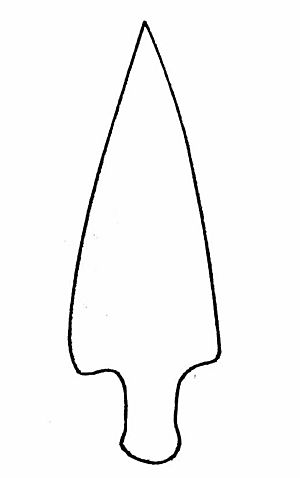Paiján culture facts for kids
The Paiján culture was an ancient group of people who lived on the northern coast of Peru. They lived there between about 13,000 and 10,000 years ago. This was from 11,000 to 8,000 years before the Common Era.
A Peruvian archaeologist named Rafael Larco Hoyle first studied them in the 1940s. He found their traces at a place called Pampa de los Fósiles. Later, a French archaeologist, Claude Chauchat, found many more sites. These sites included old camps, tool-making workshops, and places where they dug for stone.
A famous place called Chivateros was a quarry where they got stone for tools. It's in the Ventanilla District of Peru. The Paiján culture lived during a time called the Lithic stage. This means they mostly used stone tools.
Contents
Where the Paiján People Lived
Most discoveries of the Paiján culture are found along rivers in northern Peru. These rivers include the Jequetepeque, Cupisnique, Chicama, and Moche. Some signs of their presence have also been found further south in Peru. They even reached a highland site called El Inga in Ecuador.
How Paiján People Lived
The area where the Paiján people lived was dry. It had few plants and small animals like rodents, lizards, and snails. The sea was also a source of food. At that time, the sea was about 15 kilometers (9 miles) farther away than it is today. This was because sea levels were lower.
To survive, the Paiján people made long, thin projectile points. These points were attached to hollow shafts of cane or reed. They used them like harpoons to catch fish. They also gathered snails and hunted small animals such as vizcachas. They used grinding stones to prepare plants for food.
Paiján Spear Points
Paiján spear points are special tools. They are sorted into different groups based on their shape. These groups include lanceolate, triangular, intermediate, and miscellaneous.
- Lanceolate: These points have curved sides. Their widest part is not at the bottom. The tip is very long, thin, and sharp.
- Triangular: These points have straight sides. Their widest part is at the bottom.
- Intermediate: The widest part of these points might be at the bottom. Or, their curved sides might not be very clear. This makes them hard to place in other groups.
- Miscellaneous: This group includes any stemmed points that do not fit into the other three classes.
Tools Used by Paiján People
The Paiján people used many different tools. Some common ones were:
- Sidescrapers: Tools with one or two sharp edges for scraping.
- Unifaces: Pieces of stone shaped on only one side, often oval.
- Borers: Small, rare tools with three sharp points, made from jasper.
- Denticulates: These were very common. They had thick, steep edges, like small teeth.
- Bifaces: Tools shaped on both sides. These were also often found at Paiján sites.
When the Paiján Culture Existed
Based on discoveries up to 2015, the Paiján culture lived from about 13,000 to 10,000 years ago.
Early Paiján groups were large. They moved with the seasons between the coast and the Andes mountains. Later, the Paiján people lived in smaller groups and moved less often. This change happened between 11,200 and 9,600 years ago.
Anthropologist Tom Dillehay thinks the climate improved. This meant more wild plants and animals were available. So, the Paiján people did not need to move as much to find food. They still relied on hunting and gathering.
Oldest Human Remains in Peru
In 1975, archaeologist Claude Chauchat made an important discovery. At La Pampa de los Fósiles, he found the bones of two people. One was a teenager, about 12 or 13 years old. The other was a young woman, about 25 years old. They were buried in a layer of ash.
Scientists used radiocarbon dating to find their age. They were about 10,200 years old. These are thought to be the oldest human remains found in Peru.
See also
 In Spanish: Paiján (complejo arqueológico) para niños
In Spanish: Paiján (complejo arqueológico) para niños


